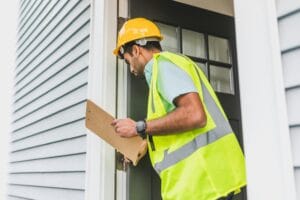Imagine standing outside your home during a fierce storm, watching as rain pelts down and winds howl relentlessly. Yet, your house stands firm, its exterior unmarred by the natural onslaught. This resilience often comes down to one incredible element: durable siding. Durable siding isn’t just about aesthetics; it’s the frontline guardian of your home, combining strength, style, and lasting protection that can save you money and stress in the long run.
In this article, we’ll explore the top durable siding options that not only shield your home from harsh weather but also elevate its curb appeal. Whether you’re a homeowner looking to upgrade or a builder seeking reliable materials, understanding the value and variety of durable siding is key. You’ll learn about different materials, their unique benefits, maintenance tips, and how to select siding that impresses visitors while standing up to elements year after year.
By the end, you’ll be equipped with practical insights to make an informed decision, ensuring your home’s exterior is as tough as it is beautiful. Dive in to discover how durable siding can truly protect and impress.
Key Takeaways
Durable siding = frontline defense: it protects your home against storms, moisture, pests, and UV rays.
Long-term savings: reduces costly repairs and lowers maintenance expenses over decades.
Boosts curb appeal: siding blends protection with style, elevating your home’s first impression.
Energy efficiency: insulated siding improves indoor comfort and cuts energy bills.
Material variety: fiber cement, engineered wood, vinyl, and metal each offer unique durability benefits.
Climate compatibility: choose siding tailored to your region’s weather conditions for best results.
Increases property value: strong siding is a selling point that enhances market potential.
Why Durable Siding Is More Important Than You Think
When it comes to enhancing the exterior of your home, durable siding is more than just a cosmetic upgrade, it’s a long-term investment that offers protection, efficiency, and impressive curb appeal. But what exactly is durable siding, and why should homeowners prioritize it above other exterior improvements?
Durable siding refers to cladding materials chosen for their strength, longevity, and resistance to weather, pests, and wear over time. Unlike traditional siding that may crack, warp, or fade within a few years, durable siding options are engineered or selected to withstand harsh environments, ensuring your house looks beautiful and remains safeguarded against common threats like moisture damage, UV rays, and temperature fluctuations.
The importance of durable siding extends far beyond appearances. According to the National Association of Home Builders, siding deterioration is a leading cause of exterior maintenance issues, which can cost homeowners an average of $3,000 to $10,000 in repairs every decade. On the other hand, investing early in durable siding options can dramatically reduce these expenses, protect your home’s structural integrity, and even improve energy efficiency by providing better insulation.
Consider the story of the Johnson family from Colorado, where extreme weather swings are frequent. After replacing their aging vinyl siding with fiber cement siding, one of the most durable siding materials on the market, they noticed significant changes. Not only did their home require less upkeep over the next five years, but their energy bills dropped by nearly 20% because the siding offered superior insulation. Beyond the functional benefits, friends and neighbors often compliment the fresh, modern look of their house, which increased its market value when they decided to sell.
In today’s competitive real estate market, durable siding options do more than protect your home, they impress visitors, increase property value, and provide peace of mind. By understanding the role of siding durability, homeowners can make smarter choices that blend aesthetics with practicality, securing a beautiful and resilient home for years to come.
How to Apply Durable Siding Step by Step for Lasting Protection and Style
When it comes to enhancing your home’s exterior with durable siding, the process may seem daunting at first. However, by understanding the step-by-step application of durable siding, you not only protect your home from harsh weather but also significantly boost its curb appeal. In this section, we’ll walk you through the essential steps to apply durable siding correctly, ensuring optimal performance and aesthetic value. Whether you’re a DIY enthusiast or preparing to work with professionals, this guide will help you make the most of your durable siding options.
Step 1: Choose the Right Durable Siding Material
Before jumping into installation, it’s crucial to select the siding material that best suits your home’s needs and your budget. Popular durable siding materials include fiber cement, vinyl, engineered wood, and metal siding.
– Fiber Cement: Known for its strength, resistance to fire, rot, and pests.
– Vinyl: Affordable, low-maintenance, and resistant to moisture and fading.
– Engineered Wood: Offers a natural wood look with enhanced durability.
– Metal: Highly durable and resistant to weather extremes, including hail and fire.
Select a material that balances longevity, visual appeal, and maintenance requirements. This choice dictates much of your installation process later.
Step 2: Prepare the Surface Thoroughly
The surface preparation is key to any durable siding project. Proper preparation ensures the siding adheres correctly and protects your home effectively.
– Inspect and Repair: Examine your home’s exterior for signs of damage such as rot, mold, or cracks. Repair any issues before installation.
– Clean the Surface: Remove dirt, dust, and debris that could prevent siding from sticking or cause unevenness.
– Install a Waterproof Barrier: Applying a house wrap or moisture barrier is essential. This layer protects your walls from water infiltration, a critical step when installing durable siding.
Step 3: Measure and Cut Durable Siding Panels Accurately
Precision during cutting avoids wasted materials and ensures a seamless finish.
– Measure Twice, Cut Once: Use measuring tape to carefully record the length and width of each wall section.
– Mark Cut Lines: Use chalk or a pencil on siding panels to mark where to cut.
– Use Proper Tools: Depending on the siding material, you may need a circular saw, tin snips, or a fine-toothed blade. For example, fiber cement requires a blade designed for hard materials.
Step 4: Attach the Durable Siding Securely
Now it’s time to put the durable siding panels in place. Adhere to manufacturer recommendations and local building codes.
– Start From the Bottom: Begin installing siding panels from the lowest point of your home’s exterior and work upward.
– Leave Expansion Gaps: Durable siding expands and contracts with temperature changes. Leave small gaps where necessary to prevent buckling.
– Use Quality Fasteners: Use corrosion-resistant nails or screws to ensure siding remains firmly attached over time.
– Check Alignment: Frequently step back and check that panels remain level and aligned for a polished appearance.
Step 5: Seal and Finish the Edges
To maximize durability and weather resistance, sealing edges and corners is critical.
– Apply Caulk: Use exterior-grade caulk to seal joints, edges, and any gaps between siding panels and window or door frames.
– Install Trim Kits: Trim pieces not only enhance aesthetics but also protect siding edges where panels meet.
– Paint or Stain (if applicable): Some durable siding options may require painting or staining for added protection and style. Follow product guidelines carefully.
Step 6: Conduct Final Inspection and Maintenance Tips
After installation, a thorough inspection helps catch any issues before they become problems.
– Inspect for Gaps or Loose Panels: Ensure all panels are tightly secured and sealed.
– Clean Up: Remove any debris, leftover materials, or dirt from installation.
– Routine Maintenance: Durable siding typically requires minimal upkeep, but it’s wise to clean periodically and inspect for damage or discoloration.
Example: Applying Fiber Cement Durable Siding
Let’s look at a quick example applying fiber cement siding to a typical home exterior.
- Material Selection: Choose fiber cement for its resistance to fire and pests.
- Prepare Walls: Install a water-resistant barrier and repair any wood rot.
- Measuring and Cutting: Use a carbide-tipped blade on a circular saw to cut panels.
- Installation: Start at the bottom, overlap panels, and nail with corrosion-resistant nails.
- Sealing: Apply caulk around the edges and paint the siding to protect it from moisture.
- Inspect and Maintain: Check yearly for paint wear and cracks.
By following these detailed steps, your durable siding project will provide robust protection combined with impressive style. Proper application extends the lifespan of your siding materials, reduces maintenance needs, and increases your home’s market value. Embrace these guidelines, and your investment in durable siding will pay off for decades to come.
Tips for Choosing Durable Siding Options That Protect and Impress:
✅ Research Material Durability: Look for siding materials like fiber cement, engineered wood, or vinyl that are proven to withstand harsh weather and resist wear over time.
✅ Consider Climate Compatibility: Choose siding designed to handle your region’s specific climate conditions, such as moisture resistance for humid areas or UV protection for sunny climates.
✅ Prioritize Low Maintenance: Opt for siding options that require minimal upkeep, so you can enjoy lasting protection without constant repairs or repainting.
✅ Focus on Impact Resistance: Durable siding should resist dents and cracks from hail, debris, or accidental impacts to maintain both appearance and function.
✅ Check Energy Efficiency: Some siding materials offer added insulation or reflective properties, helping to lower energy bills while enhancing comfort.
✅ Invest in Professional Installation: Even the most durable siding needs expert installation to ensure proper fitting, sealing, and longevity.
✅ Explore Aesthetic Variety: Durable siding doesn’t have to sacrifice style, select from a range of colors, textures, and finishes that complement your home’s design.
✅ Evaluate Warranty and Lifespan: Pick siding backed by strong manufacturer warranties and proven to last decades, giving you peace of mind and long-term value.
💡 Extra Tip: Pair your durable siding with quality gutters and flashing to maximize protection against water damage and boost curb appeal.

Key Concepts
When delving into the world of durable siding, it is crucial to explore the foundational ideas that make certain materials stand out not just for their resilience, but also for their aesthetic appeal and long-term value. Durable siding is like the armor of a house; it must withstand relentless weather conditions while simultaneously enhancing the home’s visual statement. Let’s unravel the core concepts that define what truly makes siding both durable and impressive.
The Essence of Durability in Siding
Durability in siding is often misunderstood solely as resistance to wear and tear. In reality, it encompasses a multi-dimensional robustness. Imagine siding as the skin of a tree , not only does it need to endure storms, UV rays, and temperature fluctuations, but it also has to maintain its integrity and beauty for decades. This analogy helps us appreciate that durability is a blend of strength, adaptability, and endurance.
A key aspect is the material’s response to environmental stress. For instance, certain woods may be resilient in dry conditions yet falter in the face of moisture or insects, a kind of “selective durability.” Conversely, materials like fiber cement or engineered vinyl siding serve as universal defenders, warding off moisture, pests, and fire simultaneously, much like a seasoned warrior well-versed in various battles.
The Dual Role: Protection Meets Impression
Durable siding is not merely functional armor; it’s also the home’s first impression, a visual ambassador. The phrase “protect and impress” captures this dual essence eloquently. Protection evokes ideas of shielding against external forces, wind, rain, pests, and UV radiation, creating a barrier as reliable as a fortress wall. Impress, however, brings in the artistry, the texture, the color, and the style.
Imagine a knight’s armor polished to a gleam, not just functional but commanding respect and admiration. Similarly, siding options have evolved with technologies that mimic natural textures like wood grains or even stone veneers, blending durability with sophisticated design to evoke warmth, permanence, and craftsmanship.
Longevity Beyond Time: The Science of Endurance
One can think of durable siding as a time traveler. It doesn’t merely stay the same; it adapts and ages with grace. This concept underscores the importance of materials that don’t degrade quickly or require frequent replacement. For example, traditional materials like brick and stone have been revered for centuries because their molecular structure resists erosion and decay effectively.
In the modern era, composite materials combine synthetic polymers and natural fibers, crafting a hybrid that harnesses the best of both worlds, strength and flexibility. The science behind these materials resembles the process of forging steel, where additives are introduced to enhance properties and create a more robust outcome. Hence, understanding the chemistry and engineering of siding materials opens a window into their inherent durability.
Weathering the Elements: Nature’s Ultimate Test
Siding, by virtue of its position, faces an ongoing test, a relentless duel with nature’s forces. Think of it as a marathon runner, constantly exposed but never faltering, striving to keep the house safe and sound. The impact of UV radiation can be likened to slow, invisible rust that fades colors and weakens structure at a molecular level. Similarly, moisture can creep in stealthily, leading to rot or mold if the material is not engineered to repel or resist water intrusion.
Thus, the concept of weather resistance is intricately linked with durability. Materials designed with layered protections, water-repellent coatings, or even proprietary sealing technologies create an invisible shield. This complexity is akin to a multilayered defense mechanism in nature, a tortoise shell combined with a chameleon’s adaptiveness, offering both protection and camouflage.
Sustainability and Durability: A Symbiotic Relationship
Durability in siding also resonates deeply with sustainability. In the grand tapestry of environmental stewardship, siding that lasts reduces the frequency of replacements, waste, and resource consumption. This relationship can be visualized as a virtuous cycle, where long-lasting materials lessen the burdens on landfills and reduce the extraction of raw materials.
Materials such as reclaimed wood or recycled composites represent this adherence to an eco-conscious durability, where strength meets responsibility. These options narrate a story of resilience intertwined with respect for the planet, emphasizing that durability is not just a feature but a commitment.
Aesthetic Versatility Coupled with Lasting Strength
The realm of durable siding seamlessly integrates artistic expression with structural integrity. Color retention, texture maintenance, and design adaptability play pivotal roles here. Consider durable siding as a canvas, where every grain and hue has to endure sun, rain, and wind without losing its vibrancy or character.
This harmony is like a timeless melody performed flawlessly through decades, where the siding’s appearance evolves subtly without ever losing its original charm. Advanced manufacturing techniques allow these materials to replicate natural aesthetics while promising a lifespan that outlasts traditional options, reinforcing the message that impression and endurance can be perfectly balanced.
In essence, exploring durable siding reveals a complex interplay of protection, endurance, and beauty. It stands as a testament to how materials science and design have joined forces to safeguard our homes while elevating their curb appeal. The true measure of siding durability transcends the physical; it resides in the peace of mind it imparts and the lasting impression it leaves for generations to come.
Frequently Asked Questions About Durable Siding
❓ What is durable siding and why is it important?
Durable siding refers to exterior wall materials designed to withstand harsh weather conditions, resist wear and tear, and maintain their appearance over time. It’s important because it protects your home from elements like rain, wind, and UV rays while enhancing curb appeal.
❓ Which materials are considered the most durable siding options?
Some of the most durable siding materials include fiber cement, vinyl, engineered wood, and metal siding. Each offers unique benefits such as resistance to moisture, pests, and fire, making them reliable choices for long-term protection.
❓ How does durable siding improve my home’s value?
By combining robust protection with attractive finishes, durable siding can significantly boost your home’s market value. It reduces maintenance costs, keeps the home looking fresh, and appeals to potential buyers who value quality and longevity.
❓ Can durable siding handle extreme weather conditions?
Yes, many durable siding options are specifically engineered to withstand extreme weather like heavy rain, high winds, hail, and even wildfires. For example, fiber cement siding is known for its toughness and resistance to fire and moisture.
❓ What maintenance does durable siding require?
While durable siding requires less maintenance than traditional materials, periodic cleaning and inspections are recommended. Depending on the material, you may need to repaint every few years or address minor repairs, but overall, it’s designed to minimize upkeep efforts.






